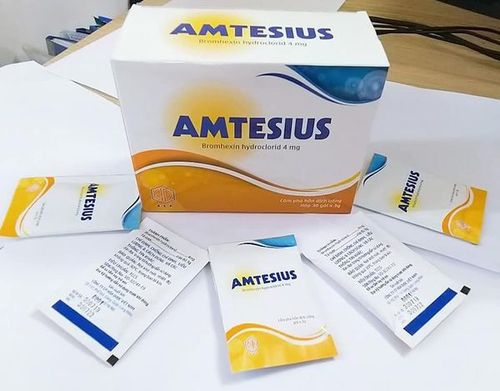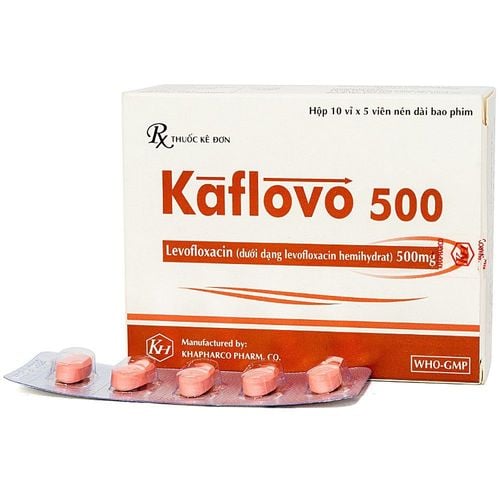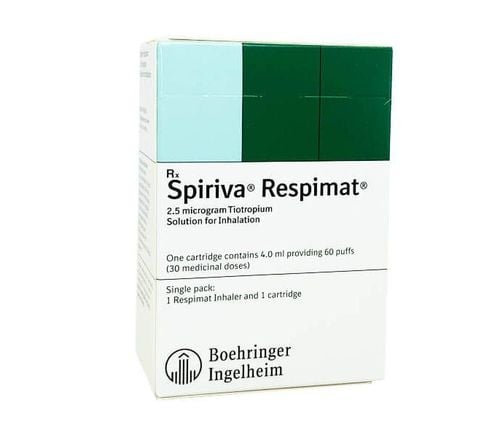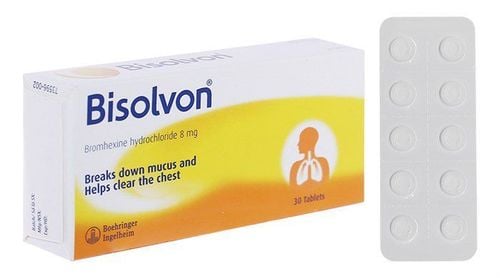This is an automatically translated article.
Article written by Pharmacist Huynh Xuan Loc - Faculty of Pharmacy - Vinmec Central Park International General Hospital
Medicines containing salbutamol are prescription drugs and belong to the list of specially controlled drugs of the Ministry of Health, so they can only be used when prescribed by a doctor according to the correct therapeutic dose. Avoid self-medicating or reusing old prescriptions for a similar illness.
1. What is Salbutamol, how does it work?
Salbutamol, also known as albuterol, commonly known by the common brand name Ventolin, is a tracheal dilator drug that helps treat respiratory diseases caused by constriction of the airways such as bronchial asthma, acute asthma attacks, and inflammation. chronic bronchitis, chronic obstructive pulmonary disease (COPD). It is also used to prevent shortness of breath caused by strenuous physical activity.Most commonly salbutamol is inhaled through the mouth into the airways through an inhaler or nebulizer. The drug is also available in the form of drops or syrups used for children. Used correctly, it helps relieve cough, wheezing, symptoms, or shortness of breath by preventing bronchospasm and increasing oxygen entering the lungs.
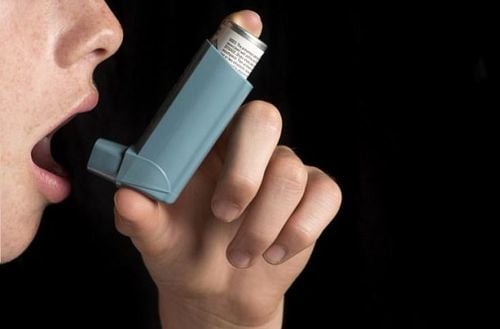
Salbutamol thường được dùng bằng cách hít qua miệng vào đường thở
2. How to use the medicine properly?
Paying attention to monitoring and using the medicine exactly as directed by the doctor or medical staff is the best way for the drug to have its full effect and to minimize harmful side effects. Patients or caregivers can also refer to the use of inhalers in the drug leaflet or the images, short videos on the internet of the manufacturer or reputable medical centers. .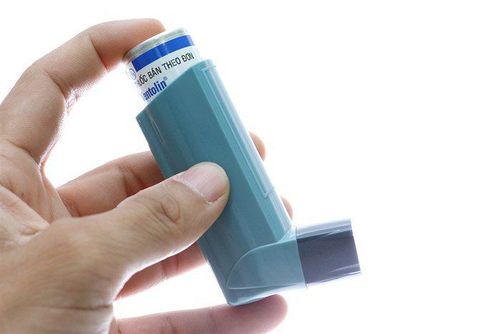
Người bệnh cần có thiết bị riêng để chuyển thuốc từ dạng lỏng thành dạng khí
With aerosol drug, the patient will need a separate device to help convert the drug from liquid to gas containing tiny drug particles to help the drug easily penetrate deep into the alveoli of the lungs. Particularly, the oral form needs to be accurately measured and dosed because the drug has a systemic effect, so the risk of unwanted side effects is also higher than the inhaled form.
One point to keep in mind when using the nebulizer form is the shelf life when first opened. Depending on the manufacturer and the form of packaging (packed in sealed aluminum blisters, multi-dose vials ...) that medicine must be destroyed in 3 to 6 months after opening.
3. Side effects when taking drugs
Like all medicines, salbutamol can also cause some unwanted effects that require monitoring. Rare but most notable are tachycardia or irregular heartbeat, palpitations, tremors in the limbs and allergic reactions such as angioedema, urticaria, bronchospasm, hypotension or collapse.>>> Using Salbutamol for children
If patients, especially children, experience these side effects, they should stop taking the drug and take them to the nearest medical facility for appropriate treatment. It is also important to note that these adverse effects may occur with overdose, especially with systemic oral formulations. Therefore, it is important to make sure to take the exact amount of medicine prescribed by your doctor.
Other possible side effects including headache, throat and mouth irritation or hypokalemia may occur with prolonged use. Tell your doctor right away if you have signs of hypokalemia such as: convulsions, decreased urine output, dry lips, increased thirst, irregular heartbeat, loss of appetite, mood changes, muscle pain. or muscle spasms, nausea, vomiting, numbness or tingling in the arms, legs, lips, or weakness.
To minimize the risk of side effects, patients or caregivers should record unusual symptoms to discuss with the treating physician. Your doctor may choose to change the route of administration (oral to inhaled) or reduce the dose, changing the medication depending on the response and current medical condition.

Người bệnh nên tuân thủ theo hướng dẫn của bác sĩ để giảm thiểu nguy cơ bị tác dụng phụ
4. Note when using
Medicines containing salbutamol are prescription drugs and on the list of specially controlled drugs of the Ministry of Health, so they should only be used when prescribed by a doctor according to the correct therapeutic dose. Avoid self-medicating or reusing old prescriptions for a similar illness.
Periodically take the child for re-examination to monitor the response to treatment as well as promptly handle adverse effects if any.
A possible reaction to salbutamol and other bronchodilators is paradoxical bronchospasm. This is an adverse reaction that manifests as shortness of breath and wheezing that is more severe even with the correct dose of the drug. When this happens, the patient or caregiver should immediately contact a doctor and get immediate medical assistance (emergency or immediate medical care). Regular or scheduled follow-up visits will help reduce the risk of this condition.
Regularly check nebulizers or inhalers to make sure they are working properly.
Inform your doctor about other medications you are taking to check for drug interactions and make sure they don't worsen an existing medical condition.
Store medication according to the manufacturer's instructions printed on the package, usually at room temperature, away from sources of heat or direct light, do not freeze. Note that nebulizer tubes that have been removed from the blister pack or used nebulizers should be discarded after a period of 3-6 months depending on the drug.
Keep the medicine out of reach of children, especially the pre-filled inhalers because young children can imitate the harmful use.
Please dial HOTLINE for more information or register for an appointment HERE. Download MyVinmec app to make appointments faster and to manage your bookings easily.
Source references: Mayoclinic.org, uptodate.com



